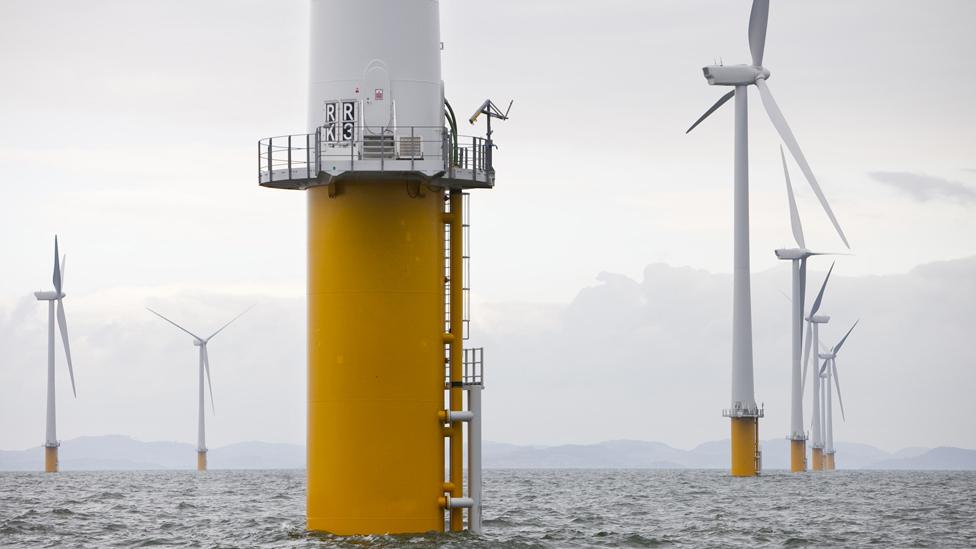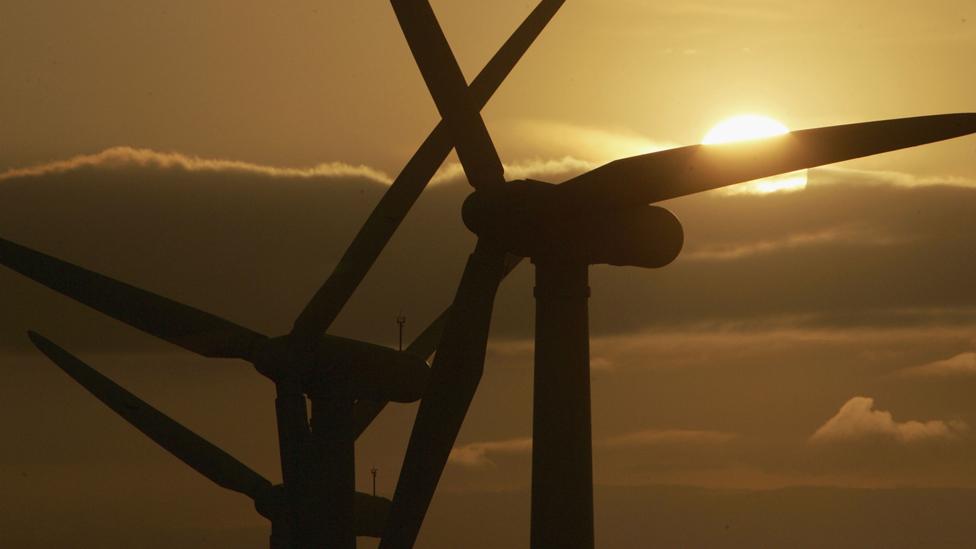Six Scottish wind farms awarded contracts
- Published

Four onshore schemes are among the six wind farm projects
Six Scottish wind farm projects are set to go ahead after being awarded UK government contracts to sell the electricity they would produce.
The schemes include Forthwind and SSE Renewables' Seagreen Phase 1, which are both proposed for the Firth of Forth.
Four onshore wind farms - Muaitheabhal and Druim Leathann in Lewis and Hesta Head and Costa Head in Orkney - have also secured contracts.
The farms are expected to be built by 2025.
All six could generate enough electricity to power the equivalent of 265,000 homes, according to industry body Scottish Renewables.
The approvals to sell electricity came through the UK government's Contracts for Difference (CfD) programme.


Analysis by Douglas Fraser, BBC Scotland business and economy editor
The auction system invites developers to price their renewable energy developments at the lowest possible cost. Those that achieve the lowest cost are awarded a Contract for Difference.
That means that if the wholesale price of power falls below that "strike price", the developer will have the difference made up by a fund sourced from the bills of electricity customers across Britain.
That contract is in place for 15 years. The subsidy does not come from the government.
While the cost of installing onshore wind has fallen and made it commercially viable in some locations, the cost of offshore wind has dropped sharply over the three auction rounds so far conducted (The previous form of subsidy was known as Renewable Obligation Certificates).
The first saw a strike price set at £114 per megawatt hour. That was driven down, through more efficient production and installation, to £57 in the second round.
This third round sees the lowest price for offshore wind fall below £40 per MWh on the largest projects and the island wind farms, and £41.61 for the Seagreen development off the Angus coast.
For comparison, the long-term floor price deal agreed with the developers of Hinckley Point nuclear power plant is £95 per MWh.
The sharp drop in development cost has met with a warning from Prospect trade union, saying that it should not be achieved as a result of its members pay and conditions.
It also makes it more difficult for Scottish companies, without operating at scale, to compete for business. That includes BiFab fabrication yards in Fife, where there were hopes that offshore wind would bring a steady supply of work.


Scottish Renewables' chief executive Claire Mack said: "Scotland's islands have some of the best wind resource in Europe and the decision to award contracts to four projects today will mean economic, social and environmental benefits for communities in the Western Isles and Orkney.
"Wind power projects are lengthy commitments between developers and the communities where they are built.
"Construction jobs are important, but it's crucial to remember that wind farms require maintenance, and the supply chain companies which form and grow to deliver these projects will enjoy guaranteed work throughout their lifetimes."
Two onshore wind farms - Lewis Wind Power's Stornoway Wind Farm in Lewis and the Viking Energy scheme in Shetland - along with the Moray West Offshore Wind Farm proposed for the Moray Firth did not win contracts.
Mainland power grid
The developers of these schemes have expressed disappointment, but hope to continue progressing with their plans.
Roddie MacKay, leader of Western Isles local authority Comhairle nan Eilean Siar, said it was "good news" two out of three planned wind farm developers had won contracts.
But he added: "It is hugely disappointing, however, that Stornoway Wind Farm has not achieved a CfD.
"We will be speaking to developers to understand how they wish to proceed in light of this news."
Stornoway Wind Farm missing out raises doubts about the future of a planned undersea cable to link Western Isles wind farms with the mainland power grid.
Called the interconnector, the cable would allow islands wind farm developers to export electricity to customers in the UK.